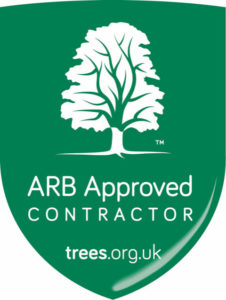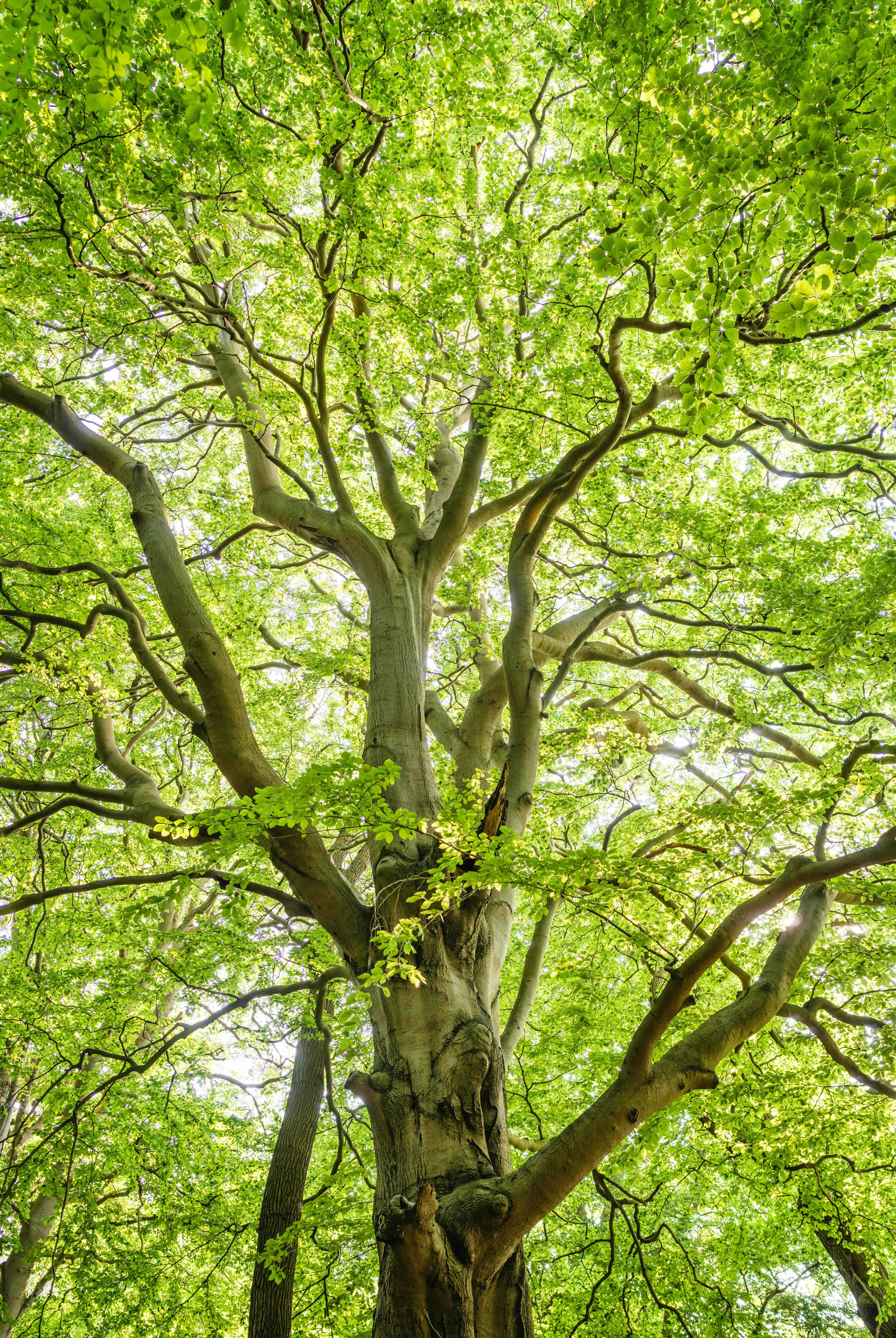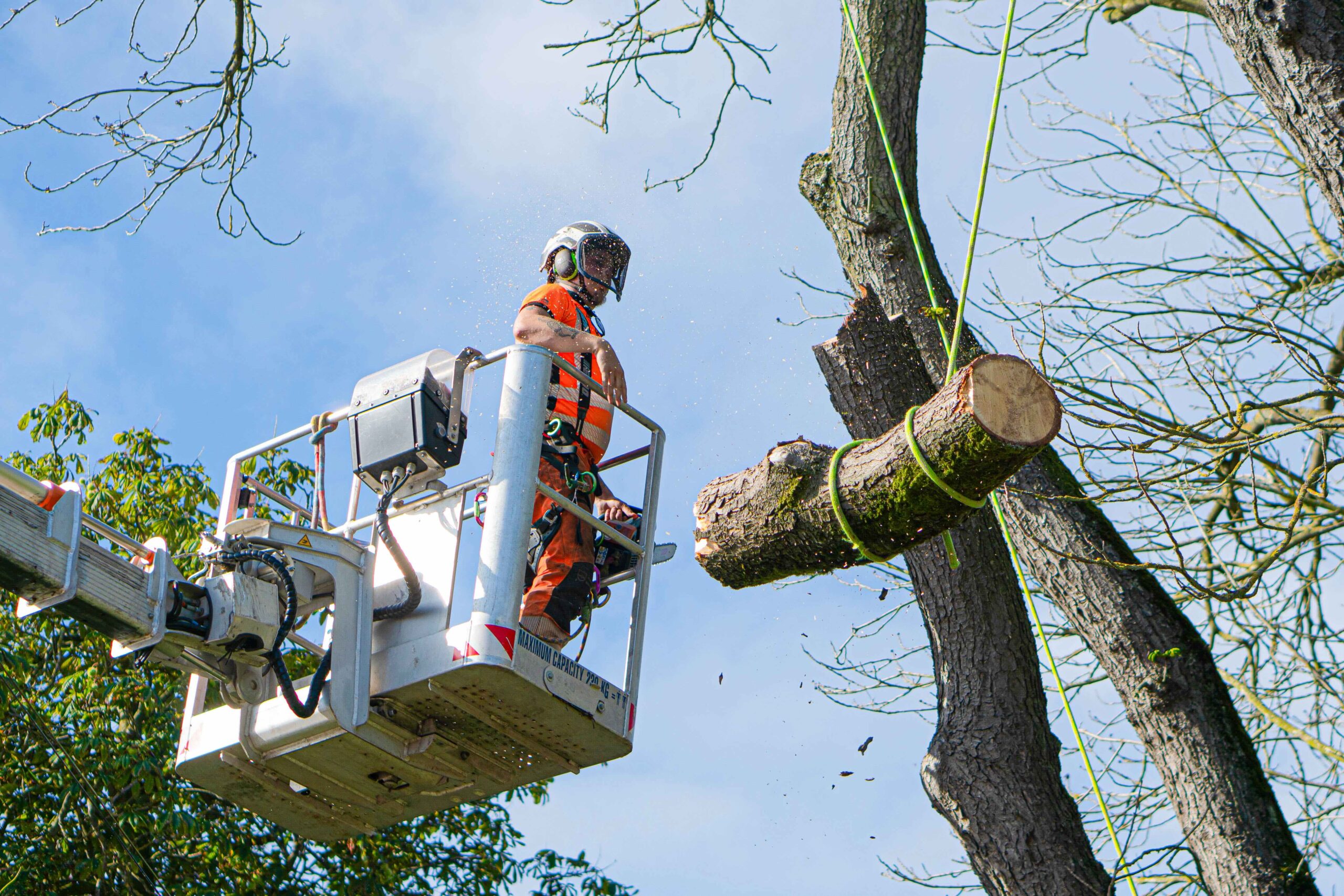In residential areas, trees are some of the most essential elements. Offering high amenity value for the area and many benefits for homeowners and passers by, from shade on a summer day to a vibrancy of colour and purifying air within the area.
However, trees in these populated areas can often cause many questions and concerns as to whose duty it is to maintain them. So it is important to understand tree ownership, regulations and responsibility for your area. Understanding who is responsible for the care and maintenance of trees, as well as the legal boundaries surrounding their ownership, you can ensure no harm comes from damaged trees to you, your home, your neighbours or their properties.
Tree Ownership in Residential Areas
Typically, the legal owners of a tree or trees are determined from the boundaries of land, extending both above and below the surface, as to who owns the tree. This tree ownership covers not only the rights to enjoy the benefits of the trees but also the responsibilities associated with their care and maintenance. However, some trees can cross over multiple boundaries into neighbouring homes or even onto public owned land. Here’s what to do if a tree comes under one any of these categories.
Trees in Your Own Garden
Responsibilities
As the homeowner, you have a duty of care over maintaining safe tree stock within your property. The safety of your neighbours, public and visitors is most important. Regular surveying by a consultant is recommended as they will provide you with a report of the tree stock and recommend any works and a time frame in which they need to be completed. Ensuring your trees are healthy and safe, you can prevent potential hazards such as falling branches or catastrophic failure of a tree. By fulfilling these responsibilities, you are contributing to a safe and aesthetically pleasing residential environment for yourselves and others.
Benefits of trees in your garden
Having trees in your garden offers numerous benefits, including increased property value, environmental advantages and enhanced aesthetic appeal. These trees can improve the air quality around your home, provide shade and create a beautiful outdoor environment for you to enjoy. They also encourage biodiversity, including habitat for birds, bats, invertebrates and mycorrhiza. Even when a tree is in its later declining stages of life, some of the most important habitat can be found. Even after death, it still hosts some fantastic feeding opportunities. However, these trees can become unsafe, so correct management in the right location is an important consideration.
Potential challenges
In your garden, trees can sometimes bring about common issues like root damage, overhanging branches and even disputes with neighbours. Root damage may threaten nearby structures due to risk of falling, while overhanging branches can pose safety risks or obstruct views.
These elements can often cause disputes with neighbours over property boundaries or tree maintenance disagreements, so managing these concerns quickly and consulting a professional when needed for advice, will help smooth the process out.
Trees in Your Neighbour’s Garden
Rights and limitations
Homeowners do have rights concerning trees in your neighbour’s garden, including issues like overhanging branches, encroachment, and nuisance. If branches extend onto your property, you have the right to trim them back to the boundary.
However, there are certain limitations to these rights, including ownership of the wood which has been removed as well as how far you can trim the branches. It is worth noting that trees covered by a Tree Preservation Order (TPO) or in a Conservation Area will require prior consent from the local authority, not the homeowner. So, it may be worth consulting a professional to understand the rights you have in your specific situation. It is also important that any works undertaken are to BS3998- 2010 if they are not, damage or decline caused by improper works can lead to further disputes and legal action.
Communication and collaboration
Open communication and collaboration with your neighbours regarding trees in their garden is key for preventing conflicts and ensuring a friendly understanding. Addressing the concerns such as overhanging branches or encroachment early on can save a larger conflict later down the line.
Legal recourse
When dealing with trees in your neighbour’s garden, it’s important to know there are legal options available. Mediation offers a neutral platform for resolving conflicts, while legal action remains a last resort for seeking resolution through the courts if necessary.
Council Owned trees
Understanding council regulations
Council-owned trees are subject to specific regulations set by local authorities covering their management, as technically they are on public land. These regulations have various aspects, including guidelines for planting, maintenance, and removal policies.
Local councils typically use meticulous planning regarding the selection and placement of trees in public spaces to maximise their benefits while minimising potential risks. Maintenance protocols are also often outlined to ensure the health of council-owned trees, covering regular inspections, pruning, and disease management. However, removal policies can be established to address situations where trees pose significant hazards or are deemed unfit due to disease, damage or development considerations.
Impact on residential properties
Council-owned trees can still affect neighbouring properties in good and bad ways just as a neighbour’s tree could. They provide positive shade and enhance privacy, but also pose potential risks during extreme weather events and can restrict sunlight to your home.
Engaging with local authorities
As a neighbouring homeowner, you’re actively encouraged to engage with your local councils regarding council-owned trees. This involves reporting hazards promptly and participating in community tree planting initiatives. Collaborating with local authorities ensures the safety of public spaces as well as your own home. Your local parish council often has a designated tree warden. – you can ask to become one if your parish does not have one, or become one of another parish in your area, too!.
Why you should use Dr Stump
As an Arboricultural Association ArbAc approved contractor, we.re a local arborist / tree surgeon in Norfolk, we offer a wide range of services from Crown reductions, tree felling, crown cleaning and deadwood removal to full emergency tree removal, all conducted with precision, in line with legislation and in adherence to HSE safety standards. So, if you’re looking for the highest quality, fully regulated and safe tree surgery service in Norfolk, get in touch! Our team at Dr Stump are on hand to help you with any tree-related queries, concerns or requests.
Just fill in our simple online form or reach out on WhatsApp for a quick quote via +44 7715 200078.
Please note, if you’re looking for comparative quotations, make sure you select other ArbAc companies as this is the only way you will get true comparative quotations. Those that don’t follow AA’s guidance will be lacking in knowledge, standards and safety and this will reflect in their quotation price.
-Remember, cheaper isn’t always best!




